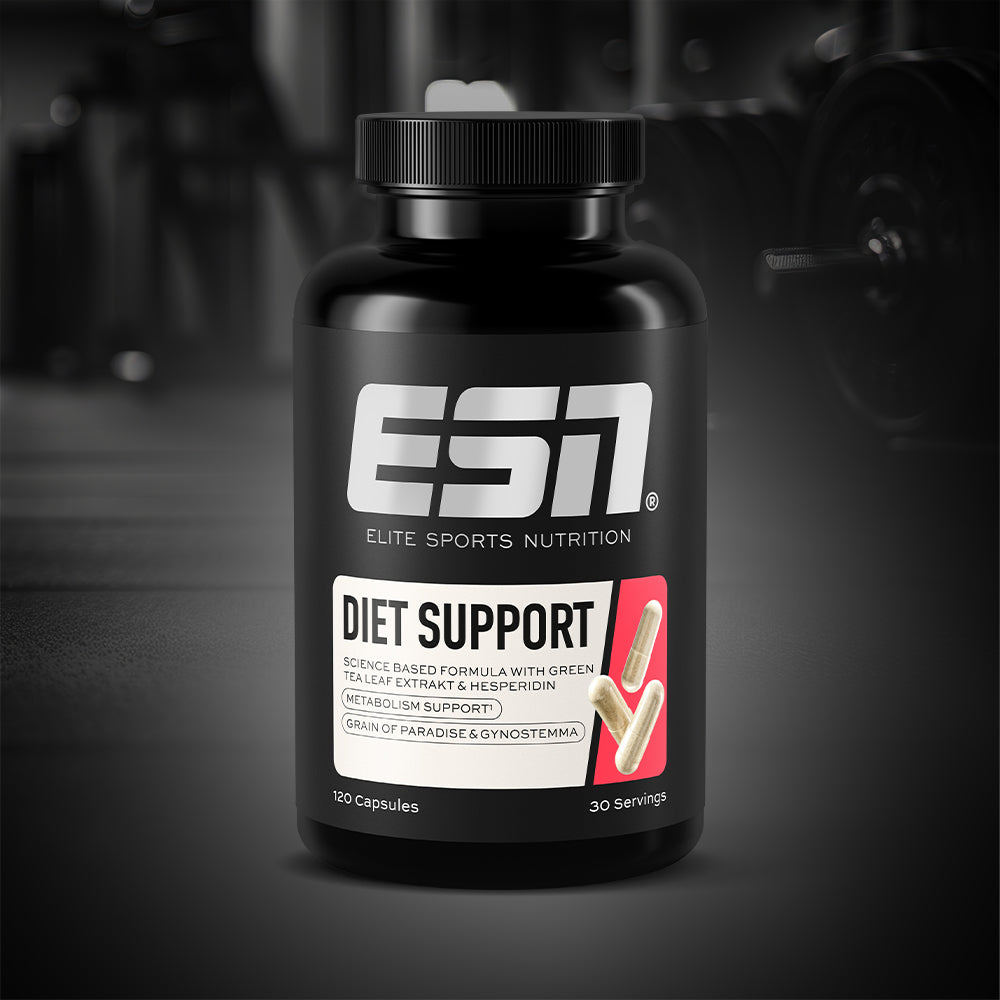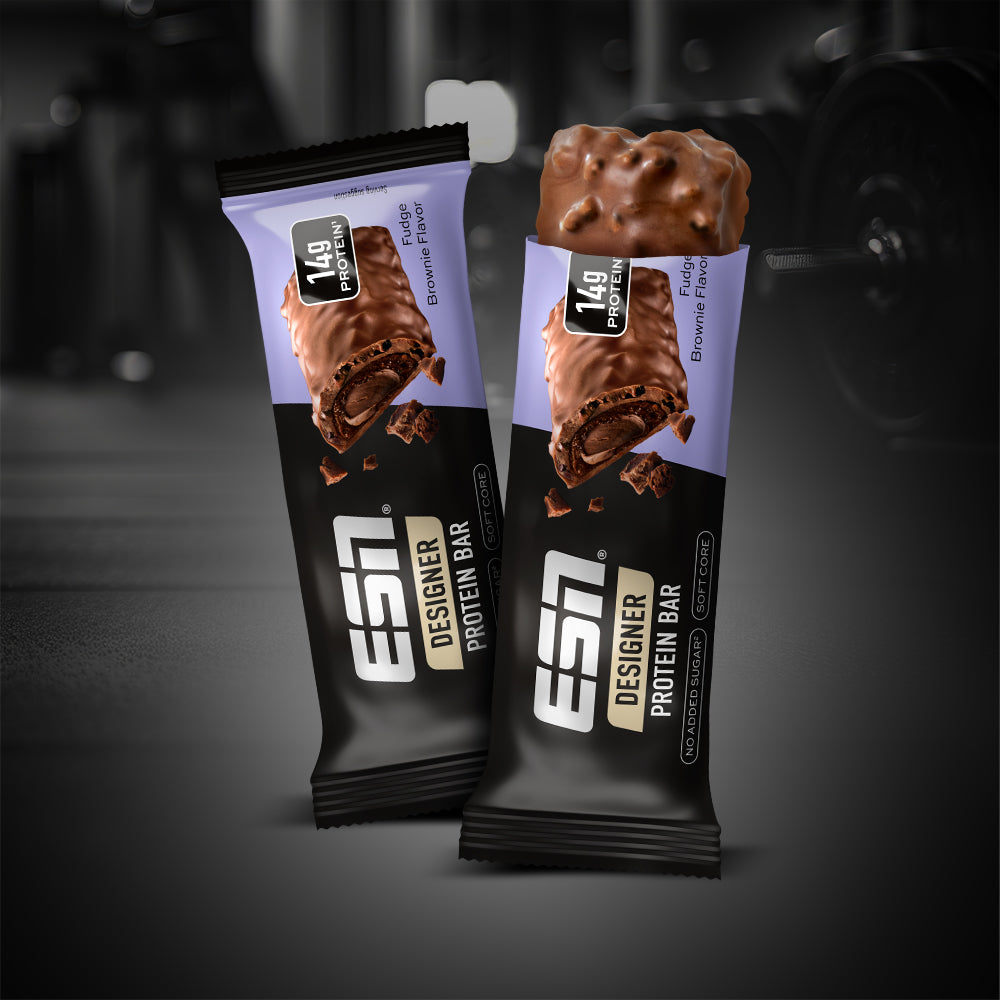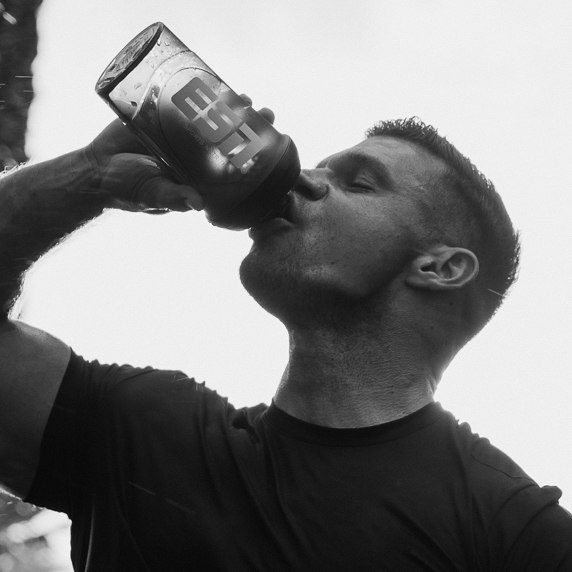Kalorienrechner
Berechne ganz einfach kostenlos deinen Kalorienbedarf abhängig von deinem persönlichen Ziel.
Du hast noch Fragen?
Hier erfährst du mehr über den Kalorienrechner und unsere Produkte.
ESN Kalorienrechner – dein Weg zu einer zielgerichteten Ernährung
Unser Kalorienbedarf-Rechner ermöglicht es dir, eine individuelle Ernährungsstrategie zu entwickeln, die auf deine Fitnessziele zugeschnitten ist. Basierend auf den von dir eingegebenen Informationen zeigt dir der Kalorienrechner:
Egal ob du Abnehmen, dein Gewicht halten oder Zunehmen möchtest, dieser Kcal-Rechner passt sich deinen Bedürfnissen an und Zielen an. Wie? Mit dem Kalorienrechner kannst du die Tagesbedarf Kalorien berechnen und somit die Ziel-Kalorien errechnen lassen, also die Kalorien, die du pro Tag zu dir nehmen solltest, um dein persönliches Ziel bestmöglich zu erreichen. deine Ziel-Kalorien. Das Wissen darüber, wie viele Kalorien du täglich zu dir nehmen solltest, ist entscheidend, wenn es um das Erreichen deiner Fitnessziele geht, denn damit kannst du deine Ernährung gezielt planen und anpassen. Wir sagen dir, warum das so wichtig ist.
1. Kalorienrechner zum Abnehmen:
Um Gewicht zu verlieren, musst du ein Kaloriendefizit schaffen. Das bedeutet, dass du weniger Kalorien zu dir nehmen musst, als du verbrauchst. Unser Kaloriendefizit-Rechner berechnet nicht nur deinen Tagesbedarf an Kalorien, sondern gibt dir mit den angegebenen Ziel-Kalorien auch direkt einen Richtwert, mit dem du ein moderates Kaloriendefizit für eine gesunde Abnahme erreichst. Die Ziel-Kalorien und Tipps für die Verteilung von Proteinen, Kohlenhydraten und Fett supporten dich dabei, Fett zu verlieren, während du gleichzeitig deine Muskelmasse erhältst. Ohne diese Info könntest du Gefahr laufen, zu wenig oder zu viele Kalorien zu essen, was deine Fortschritte beim Abnehmen behindern könnte.
2. Kalorienrechner zum Gewicht halten:
Um dein aktuelles Gewicht zu halten, ist es wichtig, deine Kalorienaufnahme im Gleichgewicht mit deinem Kalorienverbrauch zu halten – also genau so viele Kalorien zu dir zu nehmen, wie du durch Grundumsatz und Aktivitäten verbrauchst. Wenn du mit unserem Kalorienrechner deine täglichen Ziel-Kalorien für das Halten deines Gewichts berechnest, entspricht diese Angabe auch deinem täglichen Kalorienverbrauch berechnet anhand deiner gemachten Angaben. Wenn du deine Ernährung auf die empfohlenen Ziel-Kalorien abstimmst, kannst du sicherstellen, dass du weder übermäßig viel isst und ungewollt an Gewicht zunimmst noch zu wenig isst und an Energie und Muskelmasse verlierst.
3. Kalorienrechner zum Zunehmen:
Wenn du Muskeln aufbauen oder an Gewicht zunehmen möchtest, ist es wichtig, ein Kalorienüberschuss zu schaffen, indem du mehr Kalorien zu dir nimmst, als du verbrauchst. Unser Kalorienrechner berechnet daher deinen täglichen Kalorienbedarf und gibt dir mit den vorgeschlagenen Ziel-Kalorien einen Richtwert, mit dem du mehr Kalorien zu dir nimmst, als du verbrauchst und dabei deinen Überschuss kontrolliert gestalten kannst.
Ziel-Kalorien berechnen – wie funktioniert unser Kalorienrechner?
Hier ist eine einfache Anleitung, wie du unseren Kcal-Rechner optimal nutzen kannst, um deinen täglichen Kalorienbedarf errechnen zu können und deine Ernährung hinsichtlich deiner Ziele zu optimieren:
1. Persönliche Daten eingeben: Deine individuellen Daten sind der Schlüssel zur Berechnung deines persönlichen Grundumsatzes – die Kalorienmenge, die dein Körper benötigt, um im Ruhezustand zu funktionieren. Starte, indem du dem Kalorienrechner einige grundlegende Informationen gibst: Geschlecht, Gewicht, Alter, Größe und Körperfettanteil (KFA).
2. Alltagsaktivität bestimmen: Gib an, wie aktiv du in deinem Alltag abseits deines Sports bist. Wähle zwischen "wenig aktiv, etwas aktiv, aktiv und sehr aktiv". Diese Info hilft unserem Kalorienrechner, deine tägliche körperliche Aktivität ohne sportliche Betätigung zu berücksichtigen.
3. Sportliche Aktivitäten angeben & somit Leistungsumsatz
berechnen: Wie oft pro Woche treibst du Sport? Je genauer du deine sportlichen Aktivitäten angibst, desto präziser kann der Kalorienrechner Leistungsumsatz berechnen beziehungsweise deinen Gesamtkalorienbedarf in Abhängigkeit zu deinem Ziel ermitteln. Wie und wo Leistungsumsatz berechnen? Keine Sorge, diesen Wert haben wir schon in den Ziel-Kalorien integriert. Weiter unten findest du mehr Infos und eine Formel zum Leistungsumsatz berechnen.
4. Ziel festlegen: Entscheide, ob du abnehmen, dein Gewicht halten oder zunehmen möchtest. Je nachdem, welches Ziel du auswählst, wird dir der Kalorienrechner deine Tagesbedarf Kalorien und Tipps zur Makro-Verteilung anzeigen.
Good to know:
Den Grundumsatz und den Leistungsumsatz kannst du mit unserem Kalorienrechner noch nicht explizit ausrechnen. Dafür kannst du einfach die folgenden Formeln nutzen:
Grundumsatz
Der Grundumsatz ist die Energiemenge, die dein Körper in Ruhe benötigt, um lebenswichtige Funktionen wie Atmung, Herzschlag und Stoffwechsel aufrechtzuerhalten.
Grundumsatz Formel für Männer:
Grundumsatz (kcal/Tag) = 66,47 + (13,7 × Gewicht in kg) + (5,0 × Größe in cm) − (6,8 × Alter in Jahren)
Grundumsatz Formel für Frauen:
Grundumsatz (kcal/Tag) = 655,1 + (9,6 × Gewicht in kg) + (1,8 × Größe in cm) − (4,7 × Alter in Jahren)
(1,8 × Größe in cm) − (4,7 × Alter in Jahren)
Leistungsumsatz
Der Leistungsumsatz ist die Energiemenge, die dein Körper zusätzlich zum Grundumsatz für körperliche und geistige Aktivitäten benötigt.
Formel:
Leistungsumsatz = Grundumsatz × PAL-Wert
PAL-Werte (Physical Activity Level):
Wenig aktiv: 1,2–1,3
Etwas aktiv: 1,4–1,5
Aktiv: 1,6–1,7
Sehr aktiv: 1,8–1,9
Entdecke jetzt unsere Produkte
Egal, ob du Muskeln aufbauen, dein Gewicht halten oder Fett verlieren möchtest – unsere Produkte bieten dir den idealen Support, um dein Ziel zu erreichen. Probier unsere Protein-Produkte von cremigen Protein-Shakes und klaren Protein-Drinks bis hin zu leckeren Proteinriegeln – ideal, um deinen täglichen Proteinbedarf leichter zu decken und deine Muskeln optimal beim Aufbau und Erhalt zu unterstützen.¹
Du willst zunehmen und suchst Support für deine Massephase? Dann hol dir unseren Weight Gainer für eine optimale Kalorien- und Nährstoffversorgung und massive Gains.
Oder ist Abnehmen dein Ziel? Dann sind unsere kalorienfreien Getränkesirups und unser Geschmackspulver zum Zucker- und Kaloriensparen perfekt für deine Diätphasen. Entdecke unsere Must-haves und hol dir den Support, den du brauchst.
¹ Proteine tragen zu einer Zunahme an Muskelmasse bei. Proteine tragen zur Erhaltung von Muskelmasse bei























